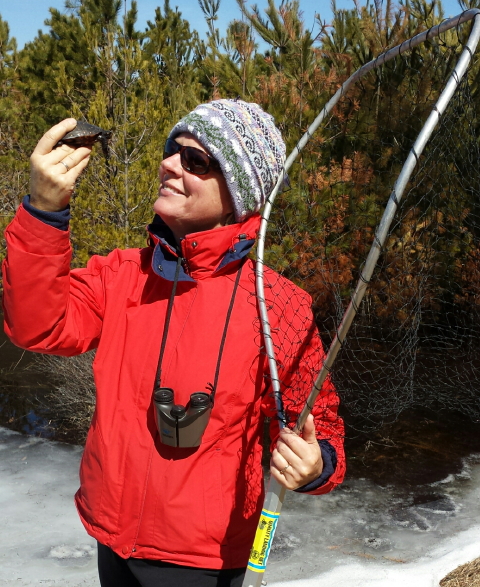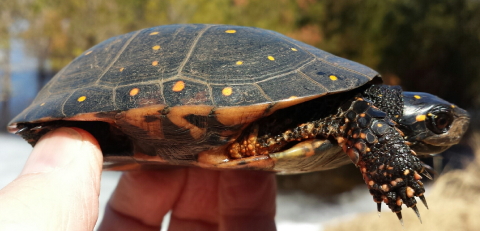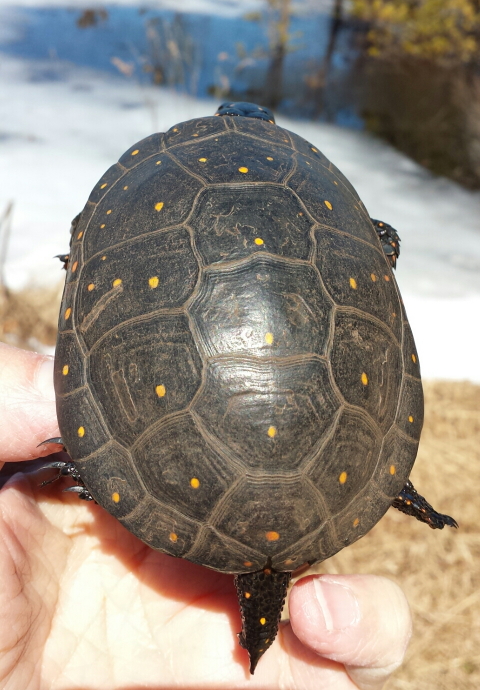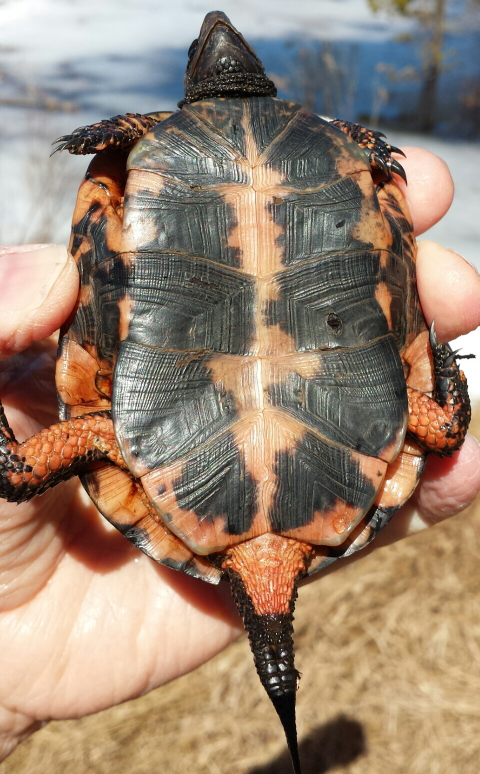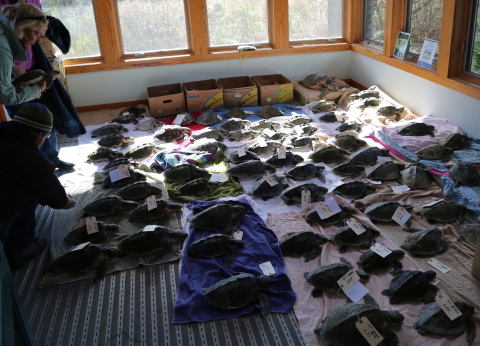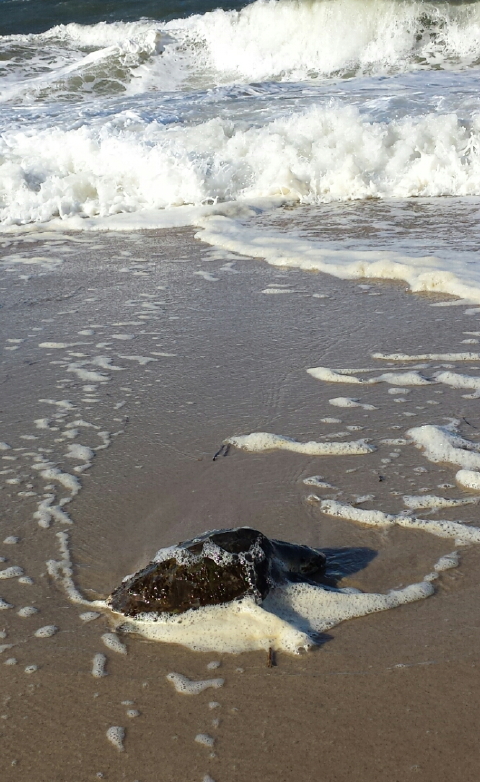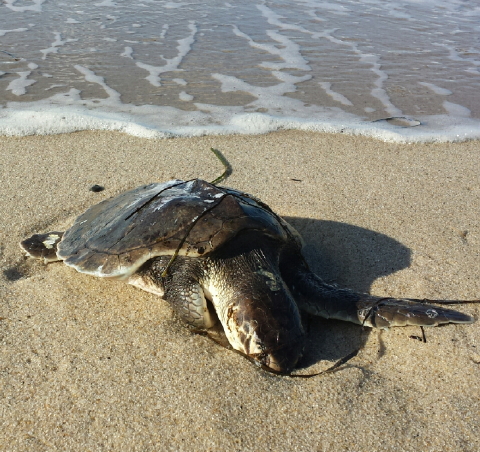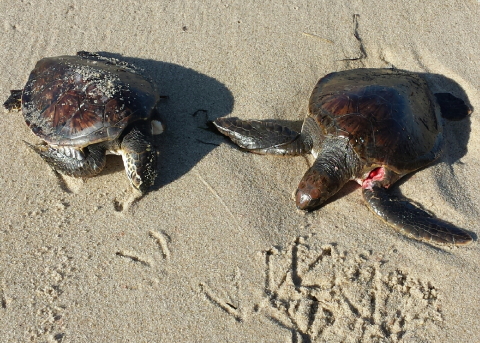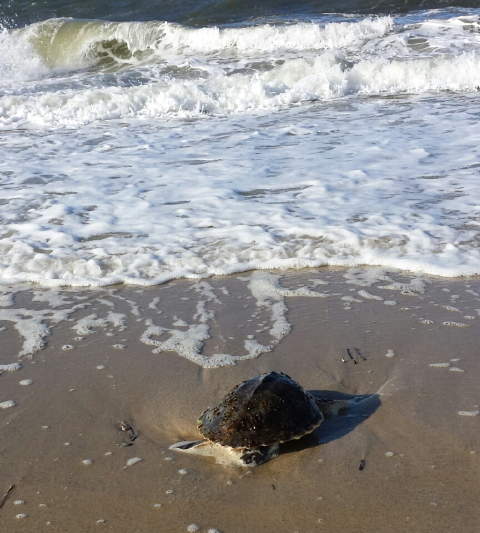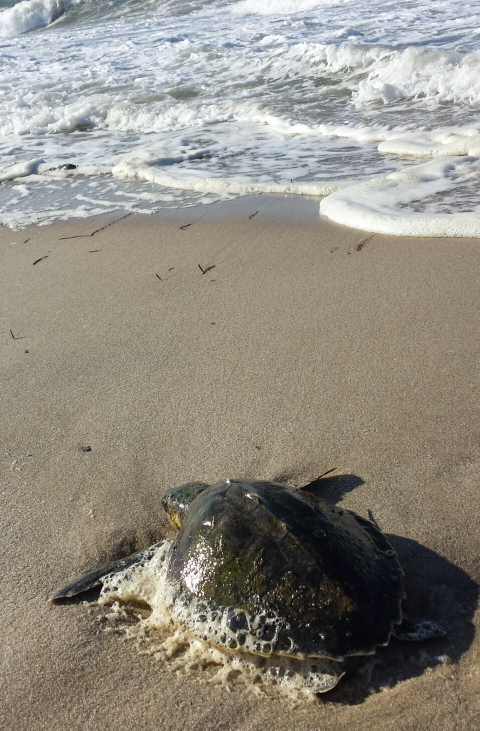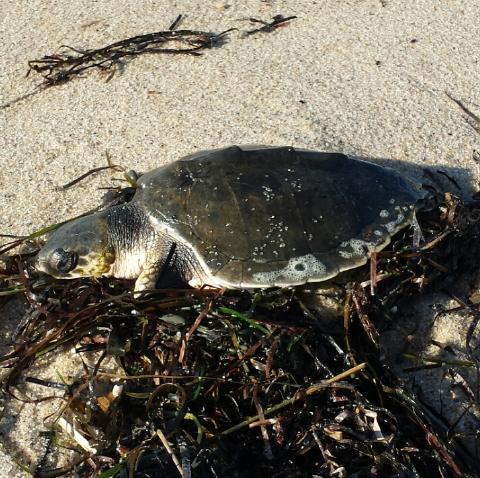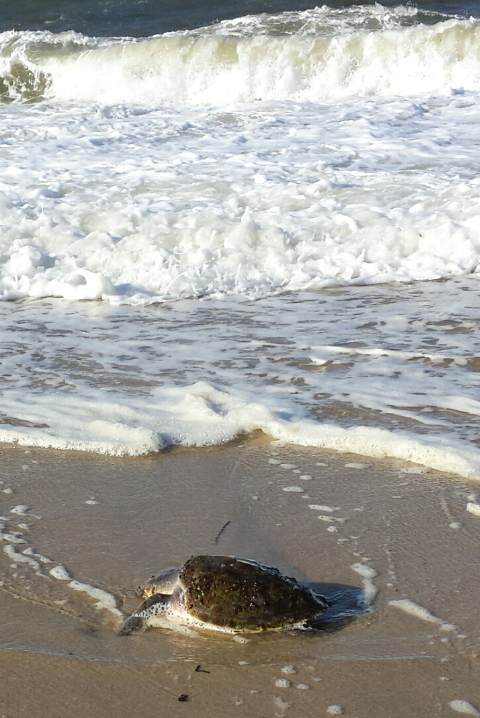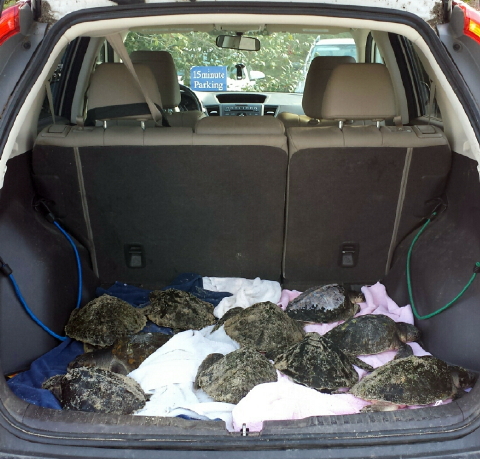Wood Frog (Lithobates sylvaticus) in SouthCoast Massachusetts
We suspect that most folks associate spring frog emergence with the chirpy soprano voice of the Spring Peeper (Pseudacris crucifer) and, no doubt, they are a delightful sign of the changing season. Â So far, we have heard a few isolated peepers in this far too cold April, but not yet in a concentrated volume that would herald SPRING with a capital S.
Haunting Wood Frog Chorus from St. Patrick’s Day, 2012
IF YOU HAVE AN iPAD & CAN’T SEE VIDEO, CLICK HERE
To our ears, though, bursting springtime is more aptly reflected in the explosive chorus of croaking wood frogs, whose voices are more akin to a heavy metal band than a soaring falsetto choir. Â The video clip above comes from March 17th, 2012, and illustrates the profound difference between gentle peepers and raucous wood frogs.
Camouflaged Wood Frog (Lithobates sylvaticus)
As we patrolled a local bog on Monday, we almost literally stumbled over this well camouflaged wood frog, hopping from woodland wetlands to mating aggregation. Â Sue Wieber Nourse fortunately spotted the frog as Rufus the Turtle Dog and Don Lewis blithely strolled on by.
Wood Frog Croaks Magically
As Don examined the wood frog, it croaked magically, echoing the insistent calls emanating from the nearby mating aggregation. Snapshot documented, we quickly released the frog to hop into the murky wetlands and join the boisterous band.
11-Year-Old Female Spotted Turtle (Clemmys guttata)Â #131
By this time in April, we should see dozens of spotted turtles mingling in local mating aggregations. Â Instead, we have captured a total of four spotted turtles, two males and two females, all of which were basking for heat or transiting from woodlands to bog. Â Air temperatures have lingered in the 30s and 40s, and the water still has icy patches. Â The forecast calls for more of the same until Friday, when finally we may see some salamander action … with any luck.
Female Spotted Turtle (Note small, thin tail and bright, colorful neck)
Also on Monday, we captured female spotted turtle #131 basking along the bank of the future mating aggregation. Â We first captured this female on 2 May 2014. Â Since then, she has gained 11 grams and has grown by about 3 millimeters. Â She currently weighs 185 grams and her carapace stretches 10.66 centimeters straight line length, making her a very healthy young lady. Â You can determine her gender by her thin, small tail and her bright colorful neck.










